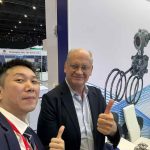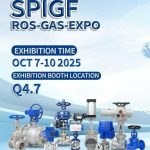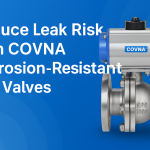Company News
Recent Posts
-
2025 Beijing International Water Treatment Exhibition — COVNA Invitation2025-10-17/0 Comments
-
-
-
-
COVNA Industrial Automation Co., Ltd is proud to announce its participation in the upcoming ROS-GAS-EXPO 2025, one of Russia’s premier exhibitions for the gas and industrial automation sectors. From October 7 to 10, we’ll be exhibiting at Booth Q4.7 in St. Petersburg, presenting our latest innovations in valve technology and automation solutions.
Event Overview
| Event Name | ROS-GAS-EXPO 2025 |
|---|---|
| Dates | October 7–10, 2025 |
| Location | St. Petersburg, Russia |
| COVNA Booth | Q4.7 |
| Website | |
| Contact Numbers | +7 926 886 8598 / +86 138 2577 8965 |
| [email protected] |
What to Expect at Our Booth
COVNA will be showcasing a wide range of industrial automation products tailored for gas, petrochemical, water treatment, and environmental applications:
- Electric Ball Valves & Butterfly Valves – Precision control for demanding environments
- High-Speed Solenoid Valves – Reliable performance for automated systems
- Smart Actuators – Enhancing efficiency and control in industrial processes
- Custom Valve Solutions – Engineered to meet diverse global requirements
Our technical team will be on-site to provide live demonstrations, product consultations, and tailored solutions for your business needs.
Why Visit COVNA?
With a global footprint across 60+ countries, COVNA is a trusted name in industrial automation. Our commitment to quality, innovation, and customer-centric engineering has made us a preferred partner in sectors such as gas, oil, chemical, water, and energy.
ROS-GAS-EXPO 2025 is not just a showcase—it’s a gateway to deeper collaboration, market expansion, and technical exchange. Whether you're a distributor, engineer, or procurement manager, we welcome you to explore new possibilities with COVNA.
















